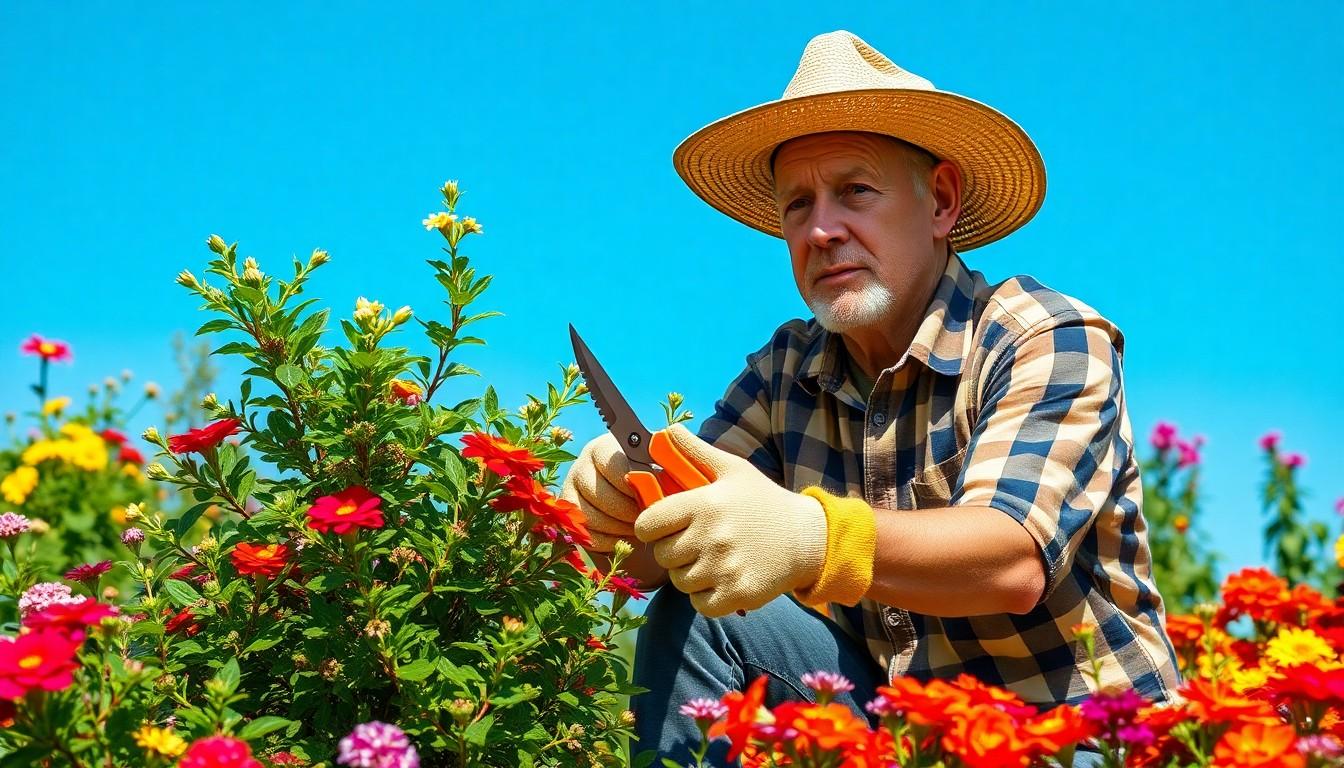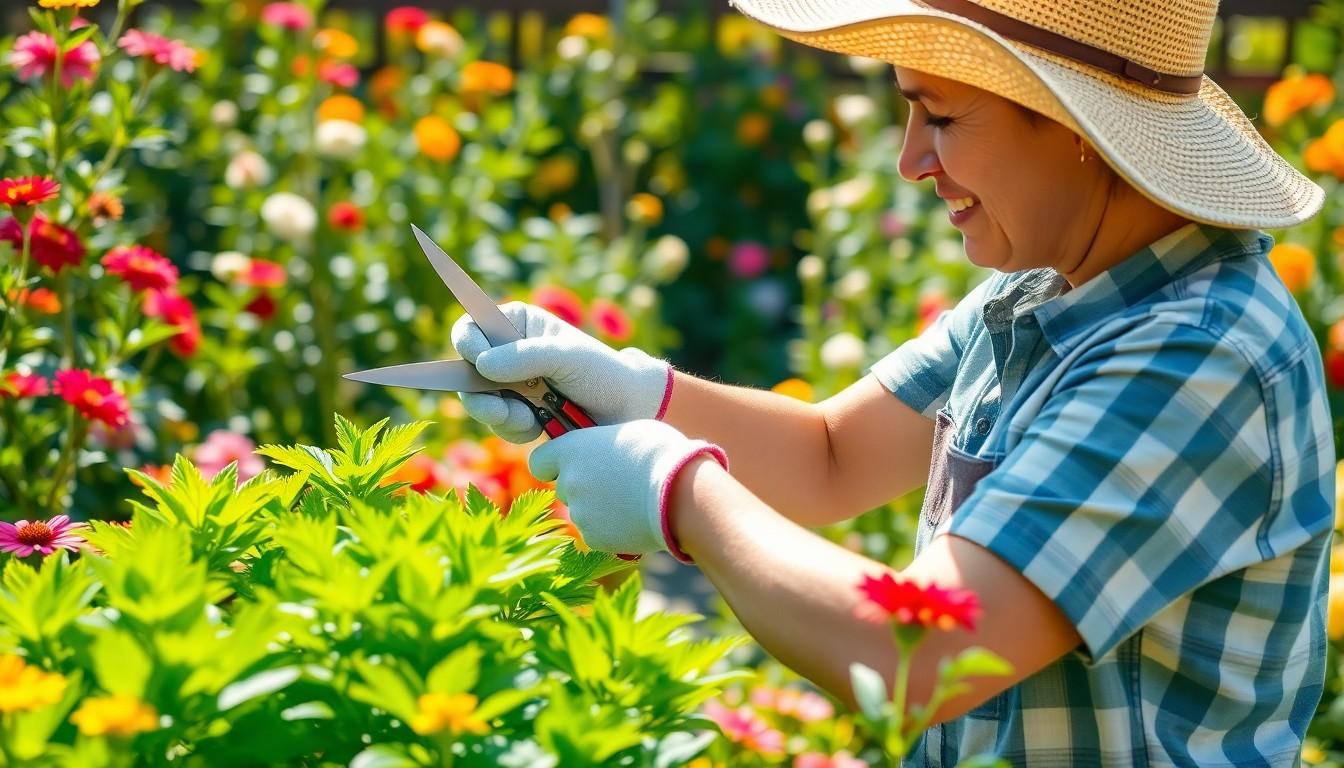The Best Fluffy Pancakes recipe you will fall in love with. Full of tips and tricks to help you make the best pancakes.

Gardening Safety Tips: Essential Tricks to Protect Yourself and Enjoy Your Garden
Gardening can be a delightful escape into nature, but it’s not all sunshine and daisies. With sharp tools, heavy lifting, and the occasional surprise encounter with a worm, safety should be a gardener’s best friend. After all, no one wants to end up with a splinter or a sunburn that could rival a lobster’s glow.
Gardening Safety Tips
Prioritizing gardening safety tips significantly reduces the risk of injury. Engaging in various gardening activities can lead to accidents without proper precautions. Using sharp tools, for example, carries a risk that can be mitigated with safe handling practices.
Lifting heavy objects often leads to strains and sprains when not done correctly. Utilizing ergonomic techniques for lifting and carrying helps prevent musculoskeletal injuries. Maintaining a clear workspace further minimizes the chances of trips and falls.
Unexpected encounters with wildlife, including snakes or insects, pose additional hazards. Knowing how to respond appropriately to such encounters adds an extra layer of safety. Sun exposure during gardening can also result in heat-related illnesses. Wearing suitable clothing and applying sunscreen protects the skin from harmful UV rays.
Managing chemicals, such as fertilizers and pesticides, is crucial for health and safety. Following label instructions and wearing protective gear ensures the safe application of these substances. Staying hydrated while working outdoors is important for overall well-being.
Employees and volunteers in community gardens also benefit from safety training. Ensuring that all participants understand safety protocols fosters a secure gardening environment. Awareness of potential hazards and their preventative measures makes gardening a more enjoyable experience for everyone involved.
Implementing these safety tips creates a conducive atmosphere for gardening, enhancing health and enjoyment. Prioritizing safety transforms gardening from a simple hobby into a rewarding, secure activity.
Common Hazards In Gardening

Gardening introduces several safety risks that require attention. Understanding these potential hazards is crucial for a safe and enjoyable gardening experience.
Sharp Tools And Equipment
Sharp tools cause cuts and injuries if mishandled. Shears, pruners, and garden knives should always be stored safely away from reach. Using protective gloves reduces the risk of cuts. Always cut away from the body to avoid potential accidents. Regular maintenance of tools prevents malfunctions. Familiarity with equipment helps in preventing misuse.
Chemical Exposure
Chemical exposure poses health risks when handling fertilizers and pesticides. Protective gear like gloves and masks safeguards against inhalation and skin contact. Proper storage of chemicals in clearly labeled containers keeps them out of reach of children and pets. Always follow label instructions for safe application. Dispose of any unused chemicals according to local regulations. Awareness of the environmental impact encourages responsible use.
Weather Conditions
Weather conditions can change rapidly and pose risks. Prolonged exposure to sun increases the likelihood of heat-related illnesses. Wearing sunscreen and protective clothing offers necessary defense. Cold conditions can lead to frostbite or hypothermia, requiring layered clothing to stay warm. Heavy rain creates slippery surfaces, so caution is essential when walking. Monitoring forecasts helps prepare for changing weather to ensure safety.
Essential Gardening Safety Tips
Safety in gardening enhances the overall experience. Implementing essential safety practices protects against injuries and promotes a secure environment.
Personal Protective Equipment (PPE)
Wearing appropriate Personal Protective Equipment (PPE) is vital. Use gloves to shield against cuts and scrapes while handling plants and tools. Safety goggles protect eyes from dust or flying debris. Long sleeves and pants provide additional skin coverage against thorns and irritants. Consider wearing sturdy footwear to support stability on uneven terrain. Utilizing PPE minimizes risk and maintains comfort during gardening tasks.
Safe Use Of Tools
Tools require careful handling to prevent accidents. Start by storing tools in a designated area after each use. Ensure sharp tools remain sharp since dull blades increase injuries due to excessive force. Always cut away from the body, maintaining awareness of surroundings. Furthermore, using the right tool for each task reduces strain and enhances efficiency. Regularly inspect tools for damage; replacing broken or worn items prevents unexpected failures.
Proper Lifting Techniques
Employing ergonomic lifting techniques prevents back strain and injuries. Bend at the knees rather than the waist when lifting heavy objects. Keep the load close to the body to maintain balance and stability. Using legs for lifting rather than the back supports proper posture. If an object exceeds personal lifting ability, ask for assistance or use a cart to transport it safely. Learning and adhering to these techniques mitigate lifting-related risks.
Child And Pet Safety In The Garden
Ensuring child and pet safety in the garden is essential for a positive experience. Active supervision plays a critical role in preventing accidents and injuries.
Supervision Recommendations
Regularly check on children and pets while gardening. Assign one adult to supervise them during outdoor activities. Set boundaries to keep kids and pets from wandering into danger zones such as tool storage areas or areas with chemicals. Use designated play areas away from garden tools and equipment. Communicate safety rules clearly, emphasizing the importance of not touching tools or chemicals. Encourage children to ask questions about gardening activities. By prioritizing supervision, gardeners can create a secure environment.
Safe Plant Choices
Select plants that are non-toxic and safe for children and pets. Avoid known toxic plants such as foxglove and oleander. Research local flora before adding new plants to the garden. Use child-friendly plants like sunflowers and marigolds, which are both safe and enjoyable. Incorporate barriers around potentially hazardous plants to deter curious hands and paws. Discuss the importance of avoiding wild plants or mushrooms that may pose risks. Making informed plant choices leads to a safer gardening space for everyone.
Prioritizing Safety In Gardening
Prioritizing safety in gardening is essential for a rewarding experience. By adopting the right precautions and using protective gear gardeners can significantly reduce the risk of injuries. Awareness of tools and equipment handling along with proper lifting techniques ensures a safer environment.
Taking note of weather conditions and managing chemical exposure also plays a critical role in preventing accidents. Additionally maintaining supervision over children and pets fosters a secure space for everyone involved.
By integrating these safety tips into their gardening routine individuals can cultivate not just beautiful plants but also a safe and enjoyable gardening adventure.
